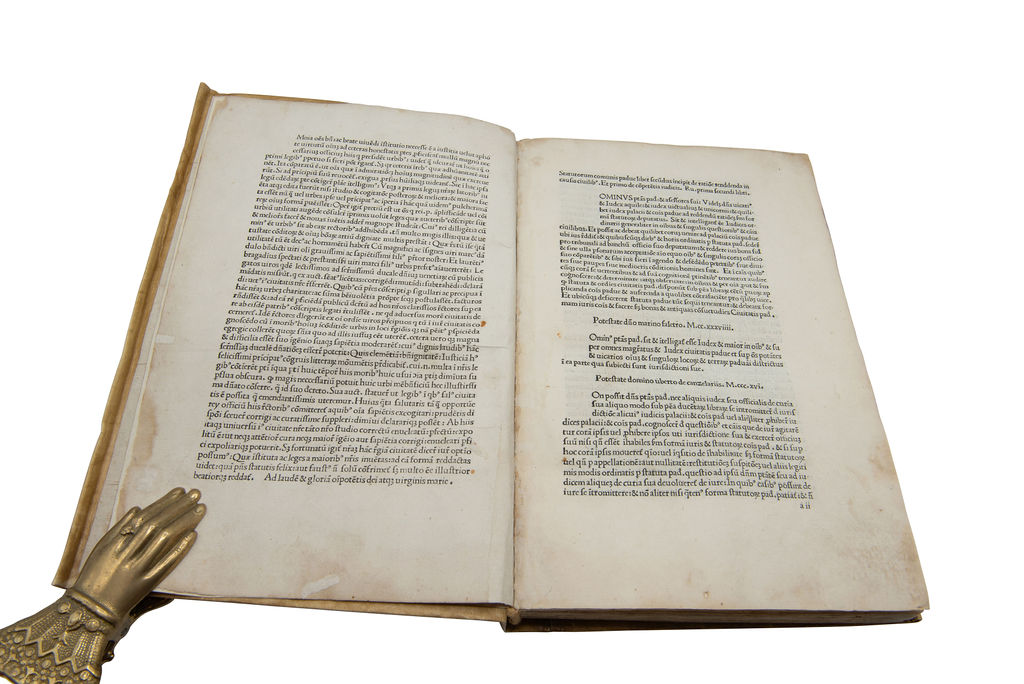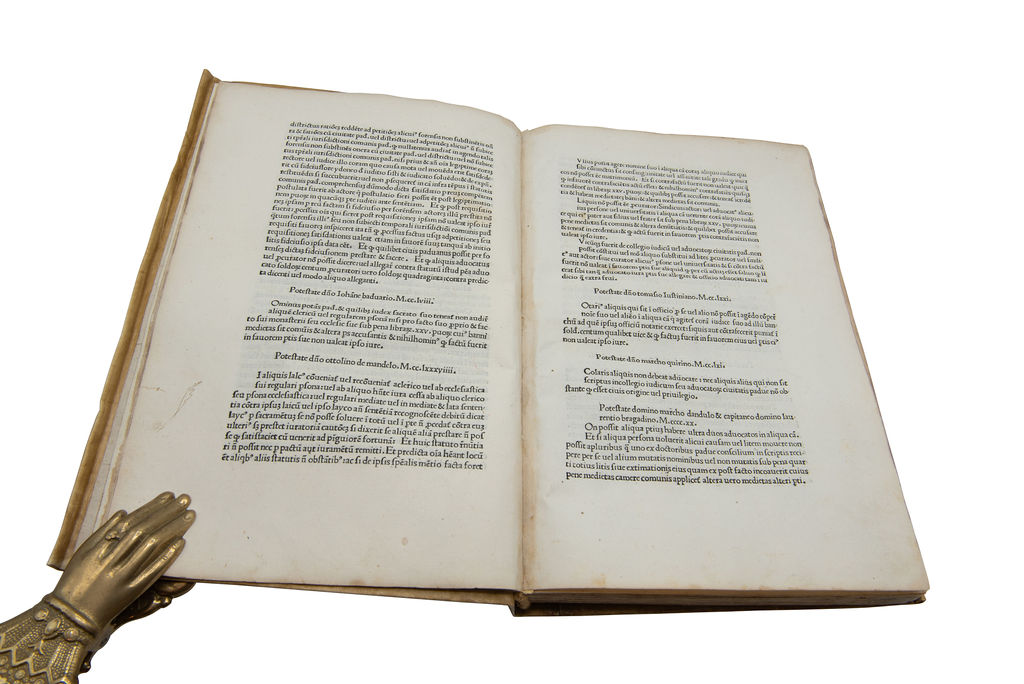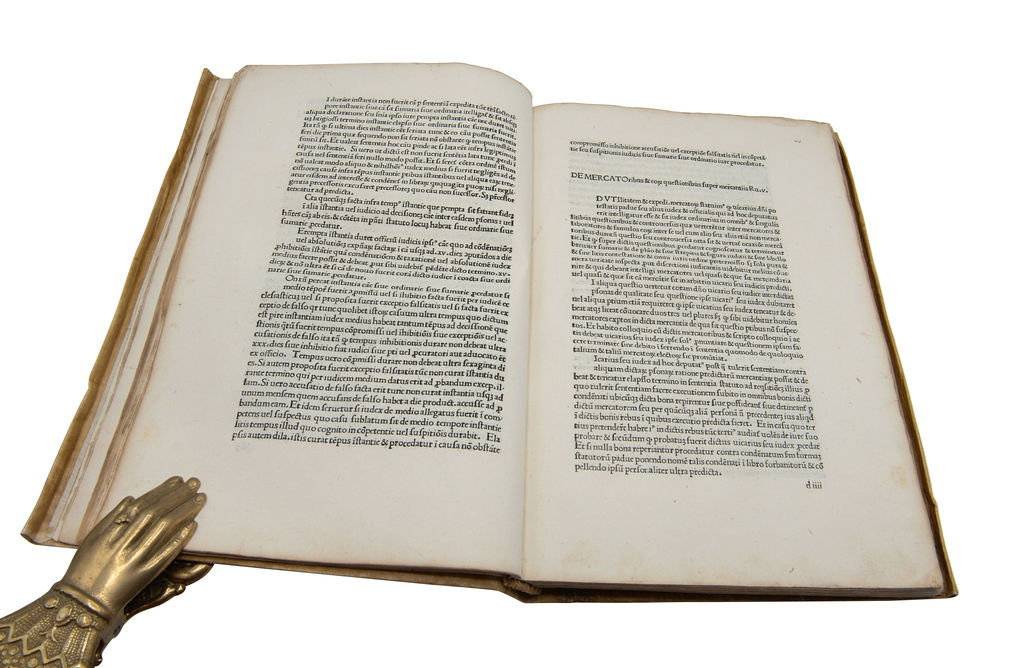PADUA.
Statuta Patavina
Vicenza, Leonardus Achates de Basilea, 26 July 1482£19,500.00
FIRST EDITION. Folio, 152 unnumbered leaves. Roman letter. Slight age yellowing, blank recto of first leaf a bit soiled, tiny wormhole to foot of four initial ll., intermittent marginal slight soiling or spots, small oil stains to lower blank margins of a few ll., early repair to blank margin of four ll. (one affecting one word on each side), three pages with ancient crayon markings partially erased. A few initials supplied in contemporary manuscript, rare marginalia (manicules). A very good, clean, wide-margined copy in old limp vellum, recased, yapp edges. Pencil ms. note “Rist. Rvalto (?), autun(no)-primavera 1965/66” to lower paste-down.
Extremely rare first edition of these early statutes of the city of Padua. It was printed by the Swiss Leonardus Achates (also known as Leonardus de Basilea, active 1472-1491), one of the first to introduce printing to Italy. Publishing the statutes was a task of great responsibility rarely entrusted to foreign printers. The introduction, remarking on the importance and necessity of the statutes for the city, terminates with an invocation to the Virgin Mary. At the end, below the colophon, approximately nine lines of printed text were cancelled: this appears to be a characteristic of all copies of this edition (see description of the copy held at Venezia, Biblioteca des Museo Correr, Inc. E 195, ISTC is00721600). A second edition came out in 1528 (Venice, Guglielmo de Fontaneto sumptibus Girolamo Giberti).
‘Statuta Padavina’ contains the legislative corpus of the city of Padua, based on the Roman ‘ius commune’. Like all other medieval and Renaissance civic statutes in Italy, it encompassed decrees on criminal, civil, tax, estate, agricultural and commercial law first codified in the early thirteenth century, when Padua gained solid political and civic status, and later revised during the rule of Ezzelini, the Carraresi and, after 1405, the Serenissima. The volume is divided into numerous chapters concerned with specific topics – e.g. types of cases and procedures in civil courts, obligations for debt and usury, the purchase of goods and estates in the district of Padua, inheritance, the ownership and management of livestock and marriage. Following the structure of juridical manuals, each section details regulations concerning specific circumstances within its area of interest: e.g., the non-validity in civil courts of legal documents styled on ‘charta bombicina’ (cotton or silk paper), situations in which contracts are considered fraudulent or novices entering monasteries may or may not purchase goods. As was customary in civic statutes, criminal law and punishment seeking to control social order played a crucial part, with long sections devoted to prisons, fugitives, ‘those who wander during the night carrying arms’, the office of the ‘iudex maleficorum’ and criminal procedures for offences like murder, manslaughter, verbal abuse of the wounded and religious, blasphemy, adultery, vagrancy, prostitution, incest, rape, theft, arson and false testimony. It is the laws of any society at any time which illustrate its priorities and fears.
USTC 761672; ISTC is00721600; Goff S719; IGI 7135; GW M43731. ISTC records only two copies in the US (Huntington Library, Newberry Library)In stock






